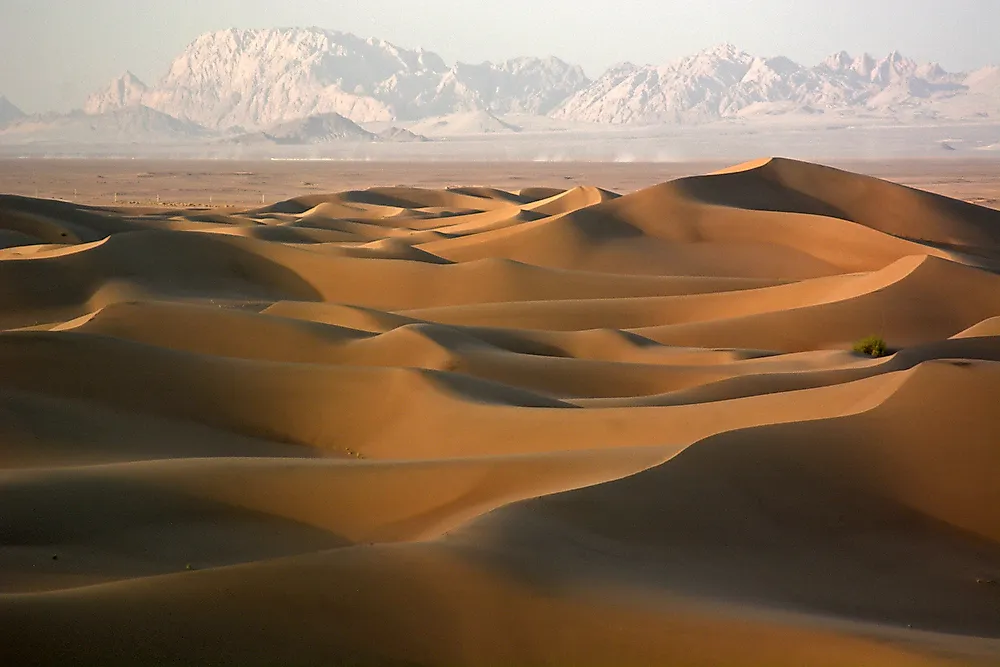What Type Of Climate Does Iran Have?

The Islamic Republic of Iran, commonly known as Iran, is an Asian country bordering the Caspian Sea, Gulf of Oman, and the Persian Gulf. It is the 18th most populous country in the world with a population of approximately 82 million people. In terms of total land area, Iran is the 2nd largest country in the Middle East and 17th largest in the world, covering 636,372 square miles. The country is home to one of the oldest civilizations in the world. Iran’s capital and the largest city is Tehran. This city is also the country’s leading economic and cultural center. Iran’s rich culture is reflected in its more than 20 UNESCO World Heritage Sites, the 11th world’s largest collection.
Geography Of Iran
Iran is geographically located in West Asia and bordered by Azerbaijan and Armenia to the northwest, Turkmenistan to the northeast, Pakistan and Afghanistan to the east, Gulf of Oman and the Persian Gulf to the south, the Caspian Sea to the north, and Iraq and Turkey to the west. Both the Gulf of Oman and the Persian Gulf form the entire 1,100 mile-long southern border. Iran’s topography is characterized by mountains which have helped to shape the economy and political history of the country. The mountains form rims around the interior basins where most of the agricultural and urban centers are located. The main mountain chain of Iran is the Zagros Mountains. Most of the peaks of this mountain range exceed 9,843 feet. The central part of Iran is characterized by closed basins that are collectively referred to as Central Plateau. This plateau has an average elevation of 2,953 feet. A portion of northwestern Iran is part of Armenian Highlands. Iran has no major rivers and streams with the only navigable river being the 520-mile long Karun. The Central Plateau has several rivers, most of which have dry beds for most parts of the year.
Climate Of Iran
Iran has one of the most diverse climates in the world. The country is characterized by 11 of the 13 world’s climates ranging from arid and semi-arid to sub-tropical climate. Iran’s climate varies greatly due to its global location and relief. The northwestern portion of the country experiences a sub-tropical climate while the south experiences tropical. The central regions lie within the continental and mountainous weather. In general, summers can be cool as well as warm while winters can be very cold or mild. In the northwestern part of the country, winters are generally cold and with heavy snowfall and sub-freezing temperature. Winter takes place from December to January. Fall and spring are relatively mild while summers are hot and dry. In the southern part of the country, winters are mild while summers are generally very hot with temperatures exceeding 38 degrees C in July. In general, the most dominant climate in Iran is the arid climate, characterized by scanty annual precipitation fall between October and April. Annual precipitation averages at most 9.8 inches, with an exception of mountain valleys of the mountain range and the Caspian coastal plains which receives precipitation of at least 19.7 inches per year. The western part of the Caspian plains receive an average of at least 39.4 inches annually
Understanding Seasons In Iran
Although the climate of Iran varies greatly, the country has four distinct seasons spread throughout the year including spring, summer, autumn, and winter. However, not all parts of Iran experience all the four seasons. The most common and easily distinguished seasons are summer and winter. Below are the description of each of the four seasons and when and where they are experienced.
Spring
In Iran, spring is experienced between March and May. In March, temperatures rise to comfortable ranges. In coastal regions, the temperatures are about 17 degrees C while in the southern areas the temperatures are a bit warmer. The mountain regions are generally cooler while temperatures in the highlands may drop up to 100 degrees C. In April, the average temperature for the whole country is 20-24 degrees C while precipitation decreases significantly and experienced mainly during the night. Water in both the Persian Gulf and the Gulf of Oman warms up to 22-26 degrees C. By May, the temperatures have reached 310C and rains are occasionally accompanied by thunder.
Summer
As spring fades away in May, the summer season kicks in and begins with a slight decrease in precipitation. By June, the temperatures are slightly higher than they were in May. June is the country’s hottest and driest month. The month is characterized by little to no rain with daytime temperatures averaging 30-36 C. The temperature of the Caspian coast may reach 38 C. In August, the precipitation increases and the temperature of the Caspian Sea fall to 24-28 C. The water temperature of both gulfs falls to 30-32 C.
Autumn
Autumn runs from September to November and is generally a good season for most Iranians as it brings with it rain. Peak precipitation is experienced in the month of October, averaging 8.4 inches. September temperatures are slightly lower than in August. In the mountain area, precipitation is accompanied by hails. In the plains, the temperatures in October average 22-250 C. In late October the temperature of the mountain region is about 100C during the day and falls to -30C at night. Mountain peaks are covered in snow during this time of the year. In November, temperatures in the foothill fall to 4-8C while the central region and southern coast experience slightly higher temperatures (15-18C).
Winter
In the western and northern parts of Iran, winter starts with wet snow while the southern coast region remains generally warm. The average temperature during winter is 10-14C. January is the coldest month in the country with the temperature dropping down to -80C in some places, especially the northwestern portion. February bring in signs of spring with temperatures rising up to 13C except for the alpine region which remains cold for longer.











